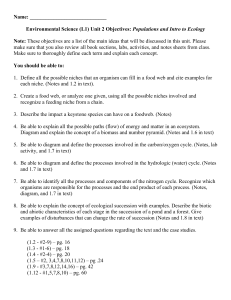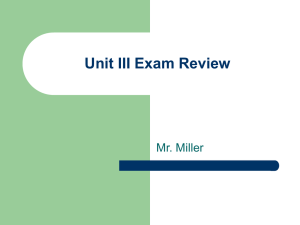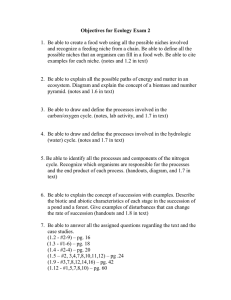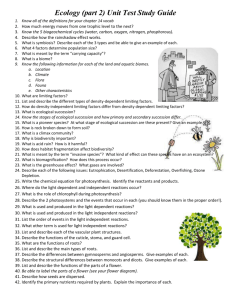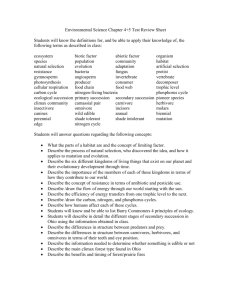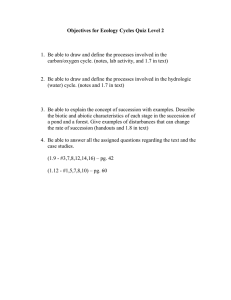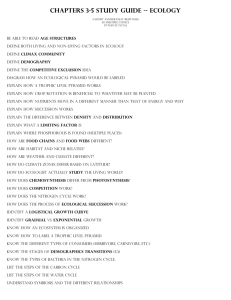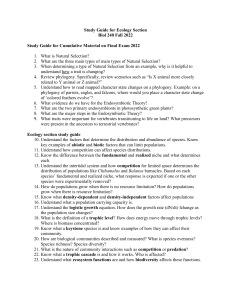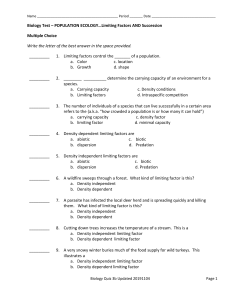STUDY GUIDE - ECOLOGY UNIT
advertisement
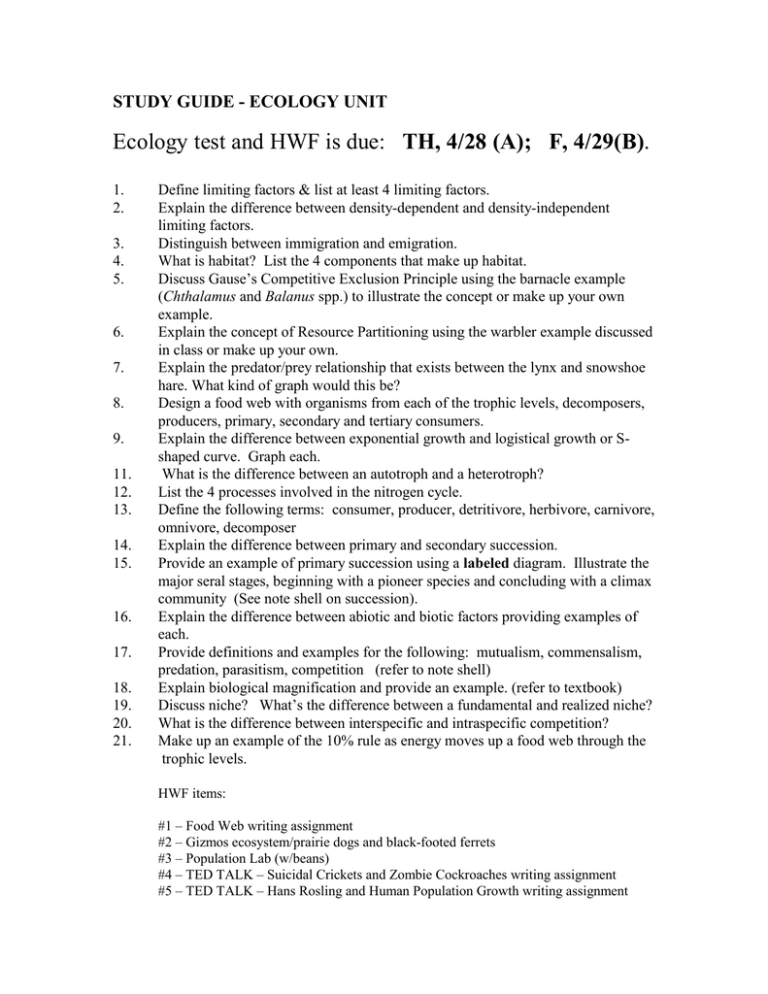
STUDY GUIDE - ECOLOGY UNIT Ecology test and HWF is due: TH, 4/28 (A); F, 4/29(B). 1. 2. 3. 4. 5. 6. 7. 8. 9. 11. 12. 13. 14. 15. 16. 17. 18. 19. 20. 21. Define limiting factors & list at least 4 limiting factors. Explain the difference between density-dependent and density-independent limiting factors. Distinguish between immigration and emigration. What is habitat? List the 4 components that make up habitat. Discuss Gause’s Competitive Exclusion Principle using the barnacle example (Chthalamus and Balanus spp.) to illustrate the concept or make up your own example. Explain the concept of Resource Partitioning using the warbler example discussed in class or make up your own. Explain the predator/prey relationship that exists between the lynx and snowshoe hare. What kind of graph would this be? Design a food web with organisms from each of the trophic levels, decomposers, producers, primary, secondary and tertiary consumers. Explain the difference between exponential growth and logistical growth or Sshaped curve. Graph each. What is the difference between an autotroph and a heterotroph? List the 4 processes involved in the nitrogen cycle. Define the following terms: consumer, producer, detritivore, herbivore, carnivore, omnivore, decomposer Explain the difference between primary and secondary succession. Provide an example of primary succession using a labeled diagram. Illustrate the major seral stages, beginning with a pioneer species and concluding with a climax community (See note shell on succession). Explain the difference between abiotic and biotic factors providing examples of each. Provide definitions and examples for the following: mutualism, commensalism, predation, parasitism, competition (refer to note shell) Explain biological magnification and provide an example. (refer to textbook) Discuss niche? What’s the difference between a fundamental and realized niche? What is the difference between interspecific and intraspecific competition? Make up an example of the 10% rule as energy moves up a food web through the trophic levels. HWF items: #1 – Food Web writing assignment #2 – Gizmos ecosystem/prairie dogs and black-footed ferrets #3 – Population Lab (w/beans) #4 – TED TALK – Suicidal Crickets and Zombie Cockroaches writing assignment #5 – TED TALK – Hans Rosling and Human Population Growth writing assignment
